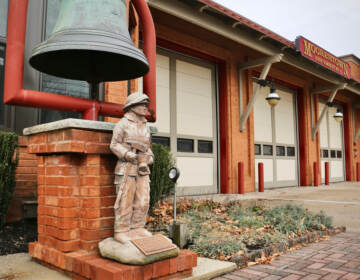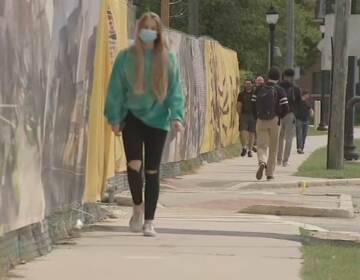Turn clocks back, and use end of daylight saving time to improve household safety
Pa. Fire Commissioner Bruce Trego is emphasizing the importance of ensuring smoke alarms and carbon monoxide detectors have fresh batteries, to save lives.

In this Oct. 30, 2008, file photo, Electric Time Company employee Dan Lamoore adjusts the color on a 67-inch square LED color-changing clock at the plant in Medfield, Mass. (AP Photo/Elise Amendola)
Though the pandemic has upended the concept of time for many of us, it is, indeed, the “fall back” point of 2020 that marks this year’s end of daylight saving time. Be sure to set your clocks back one hour to keep on schedule starting Sunday morning.
Pennsylvania State Fire Commissioner Bruce Trego also is emphasizing the importance of ensuring that smoke alarms and carbon monoxide detectors have fresh batteries.
“With so many individuals spending more time at home, it’s really critical that people take basic fire safety seriously,” Trego said. “Having functional smoke alarms and carbon monoxide detectors is the simplest, most effective way to ensure one’s family members are alerted early enough to respond.”
When working, smoke alarms decrease the risk of dying in a house fire by nearly half.
Trego urged testing home alarms monthly and replacing batteries on a regular basis. Data from the National Fire Protection Association shows that there may be as little as two minutes to safely leave a building once a smoke alarm sounds.
Dead or missing batteries are usually the main cause of nonfunctioning alarms and carbon monoxide detectors.
Carbon monoxide — also known as “the silent killer” — is odorless, colorless and tasteless and can debilitate people before they are even conscious of the fact that they’ve been exposed. Carbon monoxide sources include wood-burning fireplaces and stoves, gas-fired fireplaces, appliances, grills, generators and cars.
Symptoms of carbon monoxide poisoning are often mistaken for the flu and include nausea, headaches, dizziness, disorientation and fatigue.
The best way to make sure you’re properly equipped to prevent house fires and carbon monoxide poisoning include:
– Installing smoke alarms in and outside every bedroom, and on every level of the home including the basement.
-Adding extra alarms for larger homes.
-Using interconnected alarms, so when one sounds, they all do.
-Using special alarms with strobe lights or bed shakes for the hard-of-hearing and deaf community
For more information on fire safety, visit BeFireSafePA.com.

Get daily updates from WHYY News!
WHYY is your source for fact-based, in-depth journalism and information. As a nonprofit organization, we rely on financial support from readers like you. Please give today.






